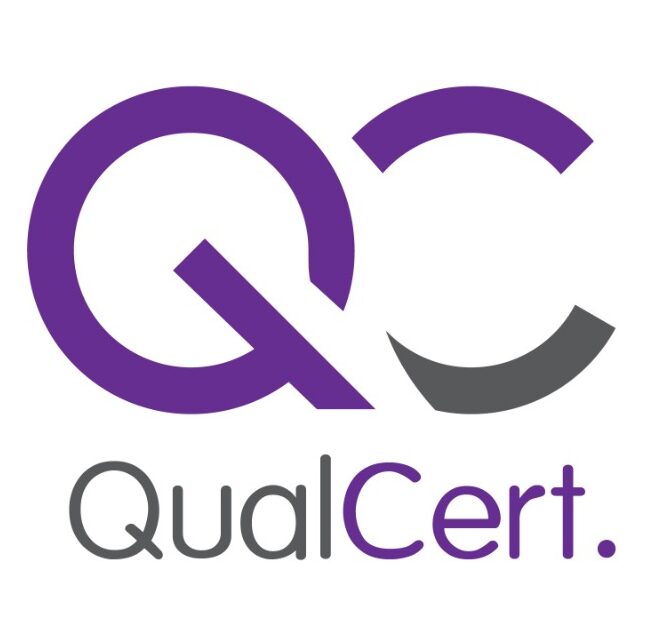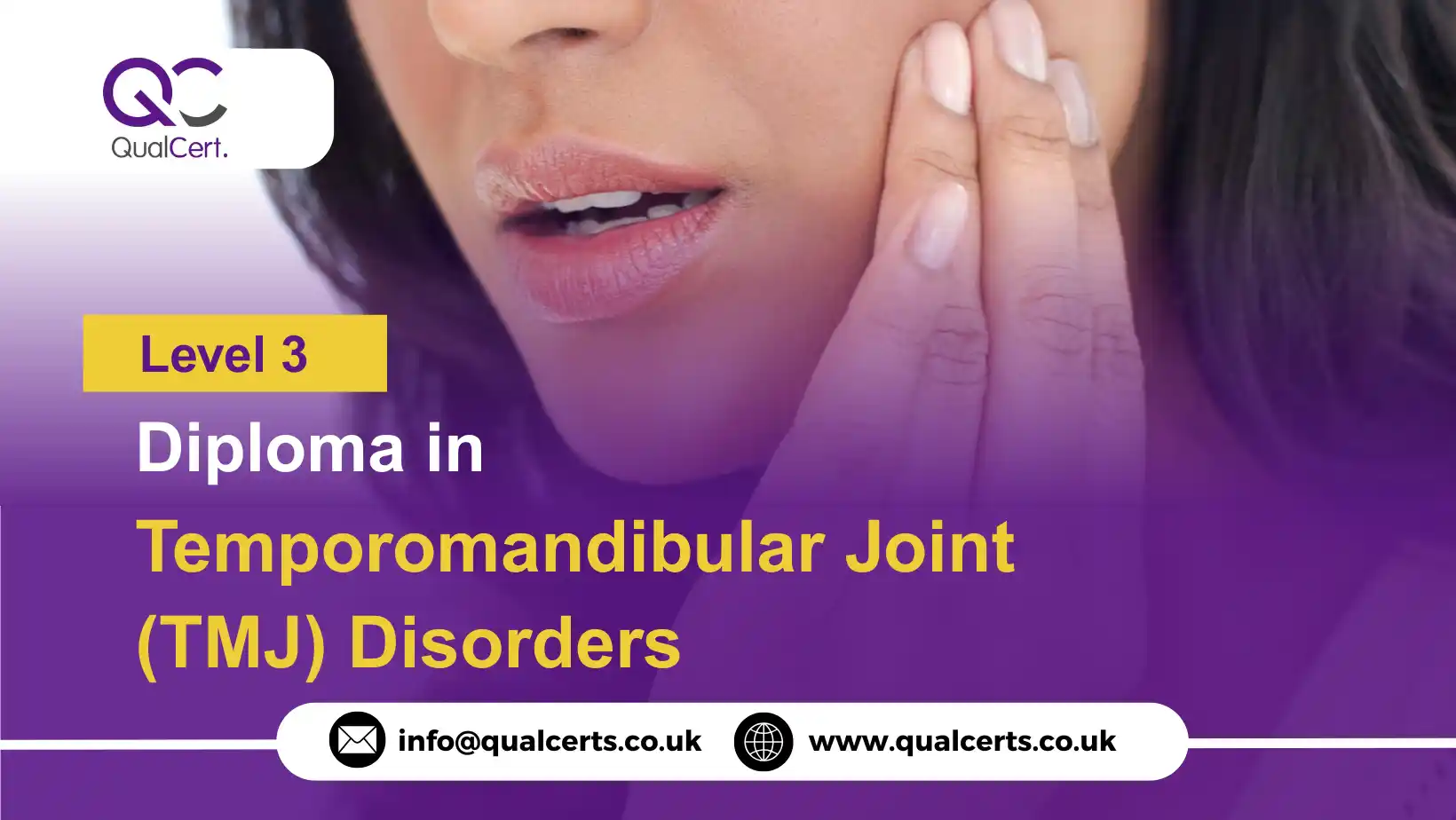The QualCert Level 3 Diploma in Temporomandibular Joint (TMJ) Disorders is a specialised qualification designed for dental and healthcare professionals looking to expand their expertise in the diagnosis, treatment, and management of TMJ-related conditions. This programme is tailored for experienced individuals seeking to enhance their career progression, deepen their clinical knowledge, and support their Continuing Professional Development (CPD) within this highly specialised area of practice.
This QualCert Level 3 Diploma in Temporomandibular Joint (TMJ) Disorders equips learners with a comprehensive understanding of TMJ anatomy, common disorders, diagnostic techniques, therapeutic interventions, and patient management strategies. The QualCert Level 3 Diploma in Temporomandibular Joint (TMJ) Disorders integrates theoretical knowledge with practical skills to ensure learners are prepared to address the complex needs of patients suffering from TMJ dysfunction, facial pain, and related orofacial conditions.
As an advanced-level qualification, this course is not suitable for beginners or those new to clinical practice. It is aimed at professionals such as dentists, dental therapists, physiotherapists, and other practitioners with existing experience who wish to develop a specialist focus in TMJ care.
Centres offering the QualCert Level 3 Diploma in Temporomandibular Joint (TMJ) Disorders must meet high standards by employing competent and qualified staff with relevant expertise. In addition, centres are required to provide access to the necessary clinical tools, learning resources, and facilities to support high-quality delivery and learner success.
Course Contents of Level 3 Diploma in Temporomandibular Joint (TMJ) Disorders:
TheLevel 3 Diploma in Temporomandibular Joint (TMJ) Disorders, offers 60 Credits, requiring a Total Qualification Time (TQT) of 300 hours, including 210 Guided Learning Hours (GLH).
| Unit Ref# | Unit Title | Credit | GLH | TQT |
| QC27040-1 | Introduction to TMJ Disorders | 10 | 35 | 50 |
| QC27040-2 | Functional Anatomy and Physiology of the TMJ | 10 | 35 | 50 |
| QC27040-3 | Diagnosis and Classification of TMJ Disorders | 10 | 35 | 50 |
| QC27040-4 | Management and Treatment Approaches | 10 | 35 | 50 |
| QC27040-5 | Pain Mechanisms and Orofacial Considerations | 10 | 35 | 50 |
| QC27040-6 | Patient Assessment, Case Management, and Follow-up | 10 | 35 | 50 |
Entry Requirements for the Level 3 Diploma in Temporomandibular Joint (TMJ) Disorders:
The QualCert Level 3 Diploma in Temporomandibular Joint (TMJ) Disorders is designed for experienced healthcare and dental professionals looking to specialise in the assessment and management of TMJ conditions. To ensure successful participation and learner achievement, the following entry requirements must be met:
- Minimum Age: Learners must be at least 18 years old at the time of enrolment.
- Educational Background: Applicants should hold a recognised qualification in dentistry, dental hygiene, dental therapy, physiotherapy, or a related healthcare field.
- Professional Experience: This course is intended for individuals with prior clinical experience in a dental or healthcare setting. It is not suitable for those without a professional background.
- Language Proficiency: Learners must possess a good command of written and spoken English to effectively engage with course materials, participate in discussions, and complete assessments.
- Commitment to Continuing Professional Development (CPD): Candidates should demonstrate a clear interest in furthering their skills and knowledge in TMJ disorders and commit to ongoing professional development.
- Access to Required Resources: Learners must have access to a suitable clinical environment, relevant equipment, and study materials to support both theoretical learning and practical application.
These entry requirements ensure that all learners are adequately prepared to meet the academic and professional standards of the programme while benefiting fully from the specialised training offered.
Learning Outcomes of Level 3 Diploma in Temporomandibular Joint (TMJ) Disorders:
Introduction to TMJ Disorders
- Understand the basic structure and function of the temporomandibular joint
- Recognise the prevalence and clinical importance of TMJ disorders
- Identify common signs, symptoms, and causes of TMJ dysfunction
- Gain awareness of the multidisciplinary approaches used in TMJ management
Functional Anatomy and Physiology of the TMJ
- Describe the musculoskeletal and neurological components of the TMJ
- Understand jaw movement mechanics and muscular coordination
- Explain how anatomical structures contribute to normal and abnormal TMJ function
- Identify how physiological factors influence TMJ health and dysfunction
Diagnosis and Classification of TMJ Disorders
- Understand standard diagnostic methods used in TMJ assessment
- Accurately classify different types of TMJ disorders using recognised systems
- Interpret clinical findings from imaging, patient history, and physical examination
- Develop differential diagnoses based on signs, symptoms, and test results
Management and Treatment Approaches
- Evaluate conservative and advanced treatment options for TMJ disorders
- Understand the use and limitations of occlusal splints, physiotherapy, and behavioural strategies
- Apply treatment planning principles tailored to individual patient needs
- Monitor treatment effectiveness and adjust management plans as needed
Pain Mechanisms and Orofacial Considerations
- Understand the neurobiology of orofacial and TMJ-related pain
- Identify common pain referral patterns linked to TMJ disorders
- Differentiate between acute and chronic pain presentations
- Recognise psychosocial factors that may contribute to persistent orofacial pain
Patient Assessment, Case Management, and Follow-up
- Conduct a thorough TMJ patient assessment, including medical and dental history
- Develop structured and personalised case management plans
- Communicate effectively with patients about their condition and care pathway
- Implement follow-up strategies to monitor outcomes and promote long-term joint health
The QualCert Level 3 Diploma in Temporomandibular Joint (TMJ) Disorders is designed for dental and healthcare professionals who wish to deepen their expertise in the diagnosis and management of TMJ-related conditions. This qualification is ideal for:
- Dentists seeking to specialise in the assessment and treatment of TMJ dysfunction
- Dental hygienists and therapists aiming to expand their clinical knowledge and patient care skills
- Physiotherapists and other musculoskeletal specialists involved in treating orofacial and jaw-related pain
- Dental nurses and technicians working closely with TMJ patients or assisting in multidisciplinary teams
- Experienced healthcare professionals who want to integrate TMJ-focused care into their practice
- Professionals committed to ongoing Continuing Professional Development (CPD) and improving patient outcomes
This course is not suitable for individuals without a background in dentistry, healthcare, or clinical practice. It is intended for those with existing experience who are looking to enhance their capabilities and deliver more comprehensive patient care in the area of TMJ disorders.
- Must employ qualified and experienced tutors with relevant clinical expertise in TMJ disorders and associated fields
- Trainers and assessors must hold appropriate professional qualifications and teaching or assessing credentials at or above Level 3
- Provide access to up-to-date and evidence-based learning materials aligned with TMJ clinical practice
- Ensure suitable facilities for both theoretical and practical delivery, including access to diagnostic tools, anatomical models, or relevant case-based resources
- Maintain robust systems for assessing learner progress, including formative and summative assessments
- Comply with all health and safety standards, particularly in clinical or simulated learning environments
- Support learners with appropriate academic and pastoral resources, including CPD guidance
- Ensure regular staff training and development to maintain delivery quality and current best practices
- Keep accurate and secure records of learner registration, attendance, assessments, and outcomes
- Demonstrate commitment to quality assurance and internal verification processes in line with awarding body standards

